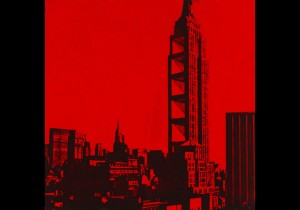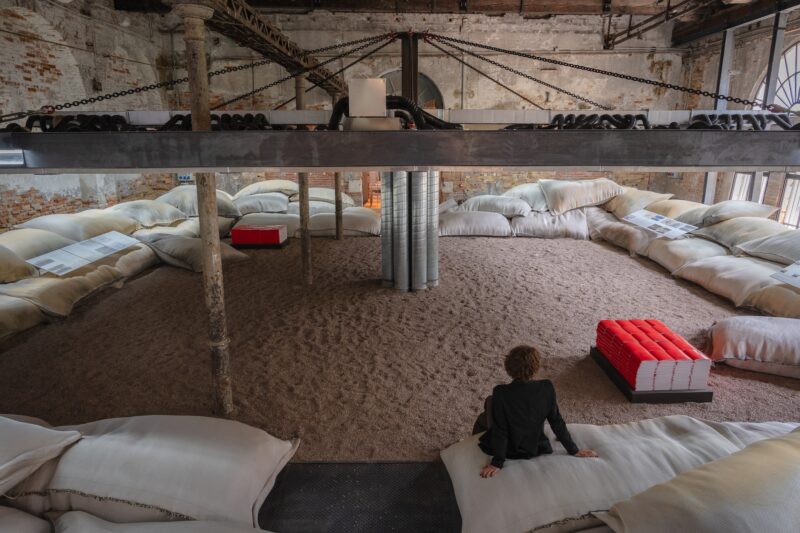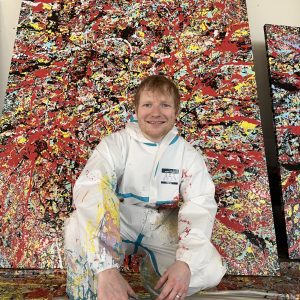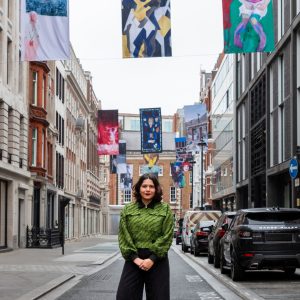
Bernard Tschumi, French and Swiss, born Switzerland, 1944. The Manhattan Transcripts, project. New York (Manhattan), New York. Introductory panel to Episode 3: The Tower (The Fall) 1980. Photographic reproduction with colored synthetic laminate 20 x 20″(50.8 x 50.8 cm) Purchase and partial gift of the architect in honor of Lily Auchincloss. Courtesy The Museum of Modern Art, New York © 2008 Bernard Tschumi
Dreamland: Architectural Experiments since the 1970s is an exhibition of works drawn from the Museum’s collection of Architecture and Design that explores the ways in which the singular landscape of New York has inspired architects since the 1970s with visions of utopia. The city has served as a model for architectural projections and reflections, and also as a metaphor for the complex relationship between the limitations of reality and the infinite possibilities of architectural thought. The exhibition begins with projects for New York, then extends its focus to other locations. Dreamland is organized by Andres Lepik, Curator, with Christian Larsen, Curatorial Assistant, Department of Architecture and Design, and will be on view in The Robert B. Menschel Architecture and Design Gallery, third floor, from July 23 through October 27, 2008.
Rem Koolhaas’s book Delirious New York (1978) and several drawings made for the book, including the recently acquired watercolor Plan of Dreamland (1977), are the exhibition’s point of departure. When Delirious New York was published 30 years ago, the seemingly whimsical publication heralded a new era in architecture. In this “retroactive manifesto,” Koolhaas attempts to provide a theoretical program, after the fact, for the development of Manhattan. Based on historical analysis of the design and construction of such urban projects as Coney Island and Rockefeller Center and of such multifunctional skyscrapers as the Downtown Athletic Club, Delirious New York is an effort to locate and analyze contradictory concepts in urbanism and architecture, both conscious and unconscious. Also included in the exhibition is the film Caught in the Act (Flagrant Délit) (1979), by Koolhaas’s collaborator Madelon Vriesendorp, shown for the first time since being recently rediscovered.
“Looking at the recent work of many contemporary architects,” Mr. Lepik explains, “It seems worthwhile to look back to their early ideas, which still seem very radical and unrealistic.”
The explosion of architectural thought and experiments that took place in the 1970s resonates to this day. Raimund Abraham, Peter Eisenman, Rem Koolhaas, Steven Holl, and Hans Hollein are among the well-known architects practicing today who are inextricably linked to both the practice and theory of the 1970s. During this time, the city as a site for building—and New York especially—became the screen for the projection of architectural fantasies and utopias. The exhibition explores these imagined projects, as well as the ways that these experiments eventually resulted in real projects such as family houses and skyscrapers. Fantastic villas set outside city limits provide stark contrast to architects’ urban utopias and represent a desire for freedom from the confines of the city. Dreamland features the architectural process of rendering visions and dreams that, in some cases, are made real.
In addition to the Koolhaas drawing, other recent acquisitions in the exhibition include works by Diller + Scofidio and Simon Ungers. Several works in the exhibition focus on urban retreats—architectural fantasies of escaping the constraints of the city’s gridded blocks for the peace and quiet of the countryside. The country retreats included in the exhibition embody strong architectural positions, including a house that is a “perception machine” (Diller + Scofidio), and a minimalist sculpture (Ungers). Each offers a model for future experimentation.
The centerpiece of the gallery is a display of architectural models organized as a kind of fantasy city juxtaposing in close relation both unbuilt visionary projects and realized buildings. The walls of the gallery feature architectural drawings that complement and supplement the dreamscape







